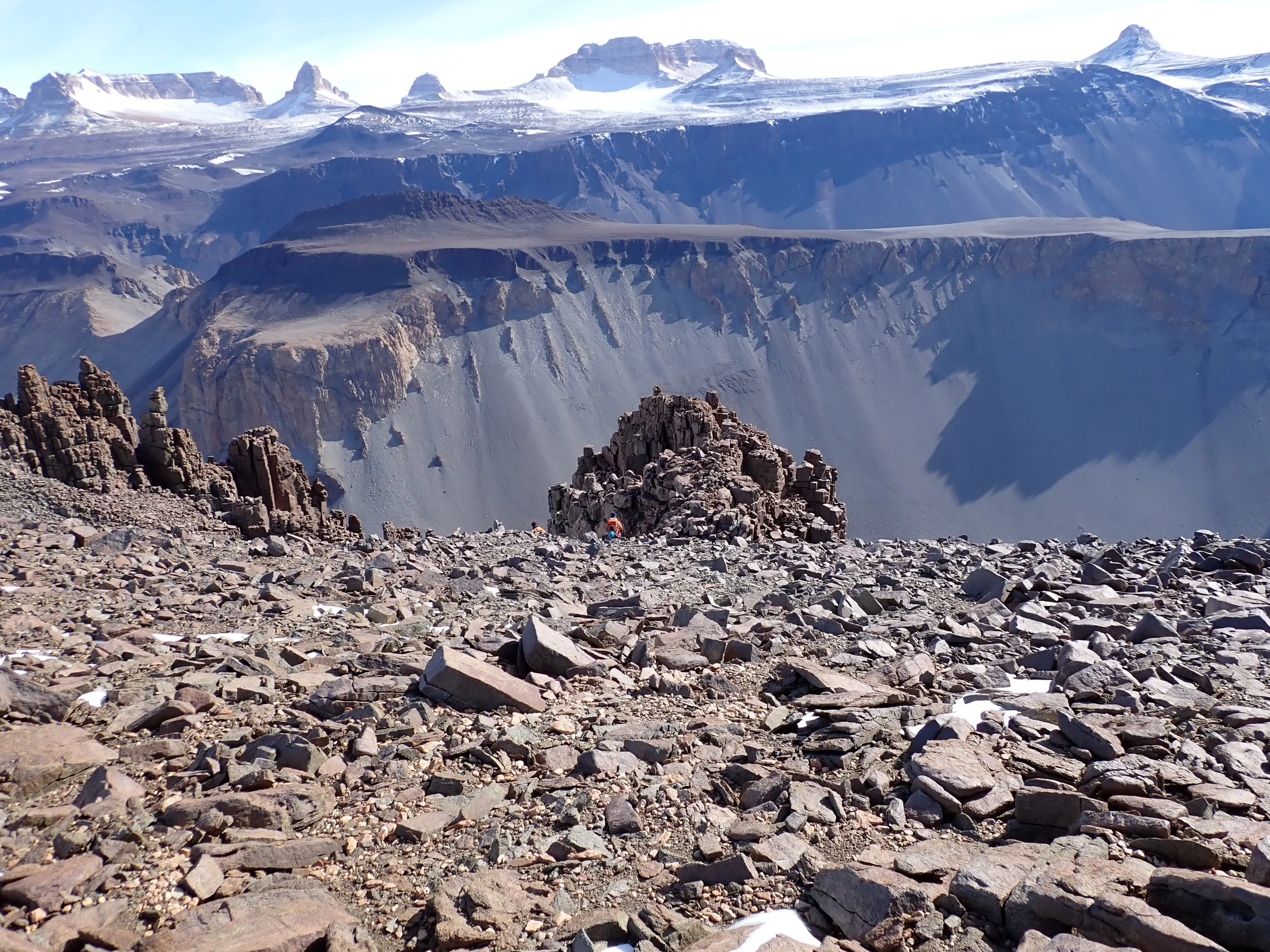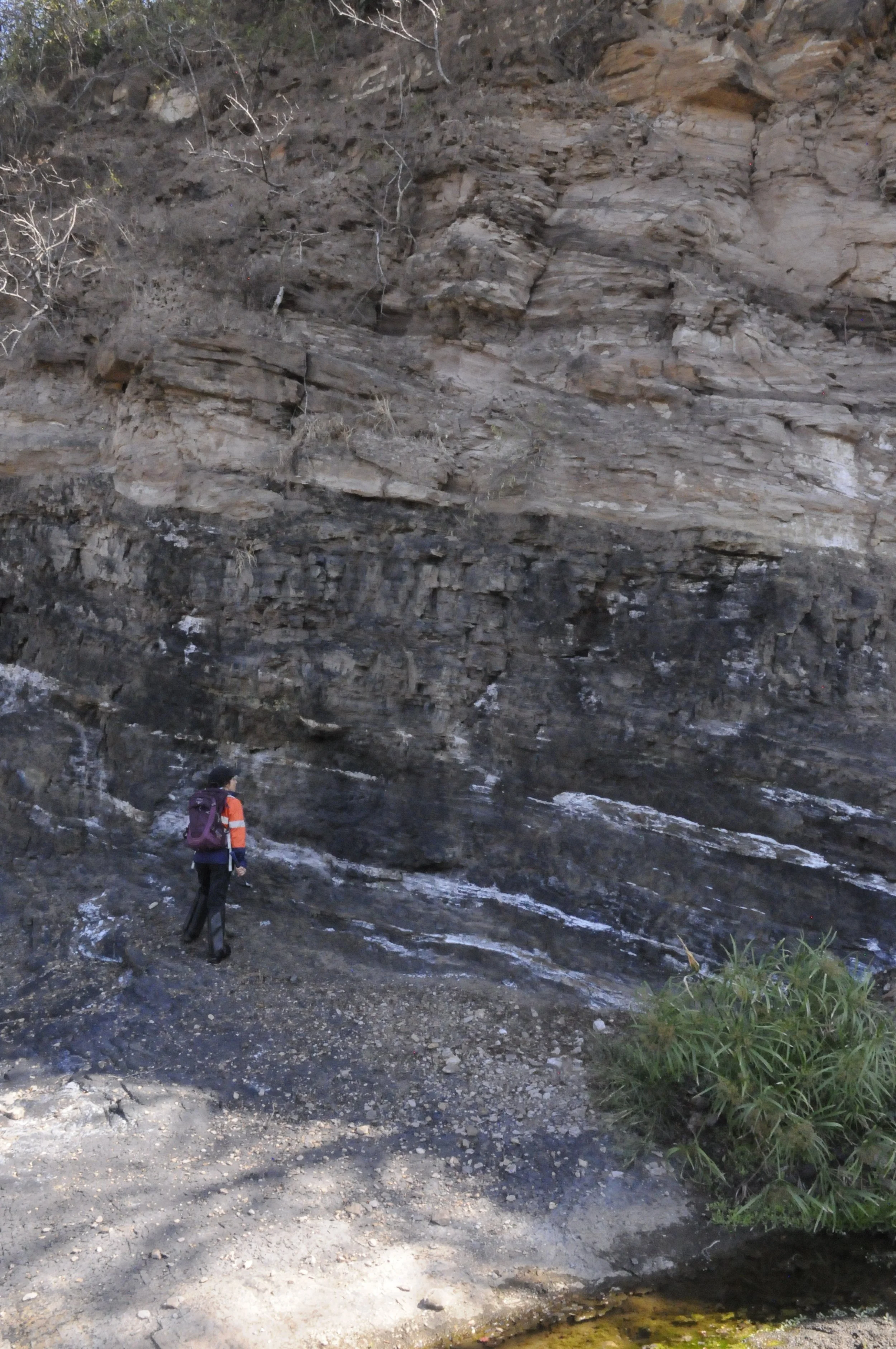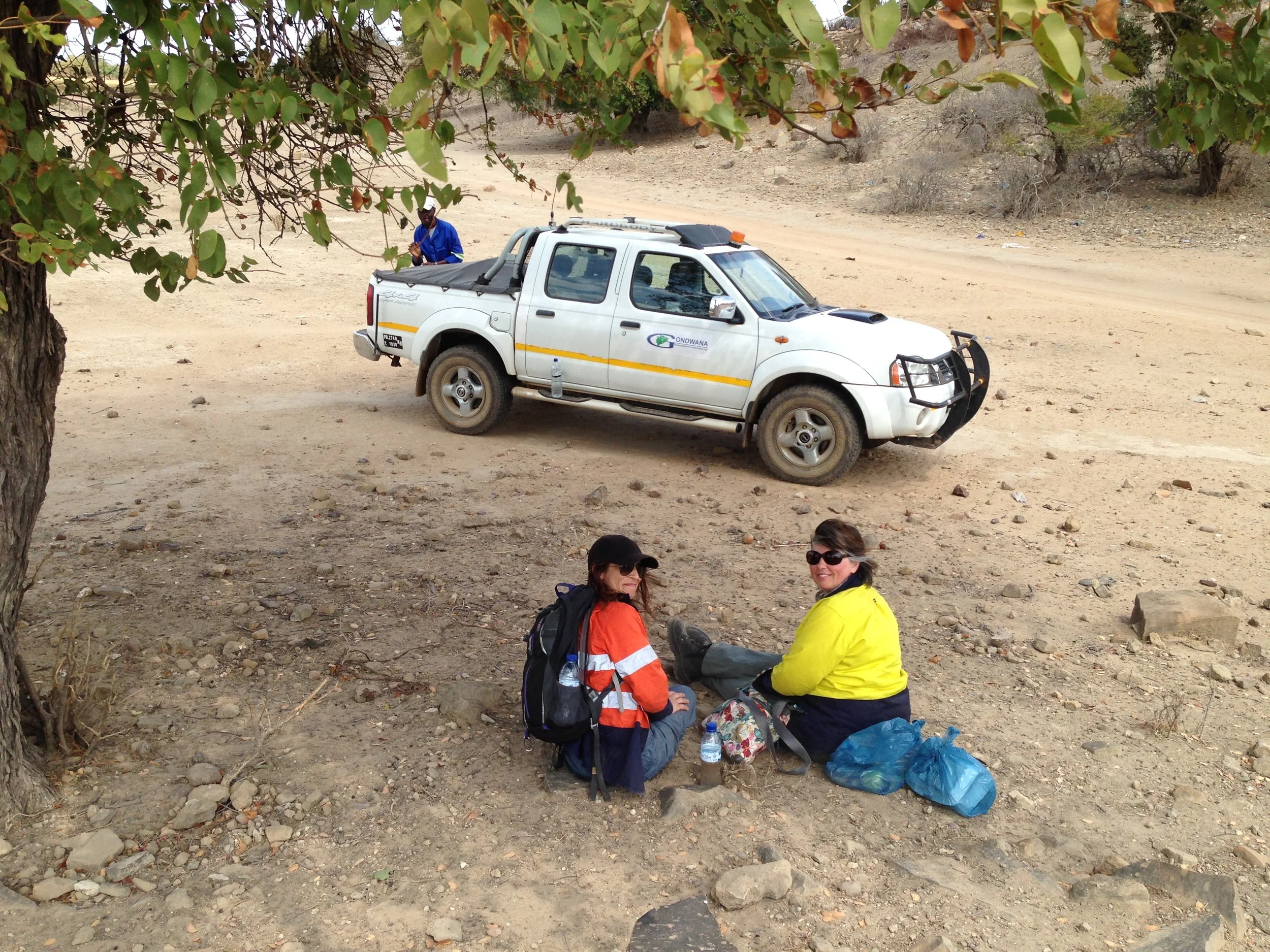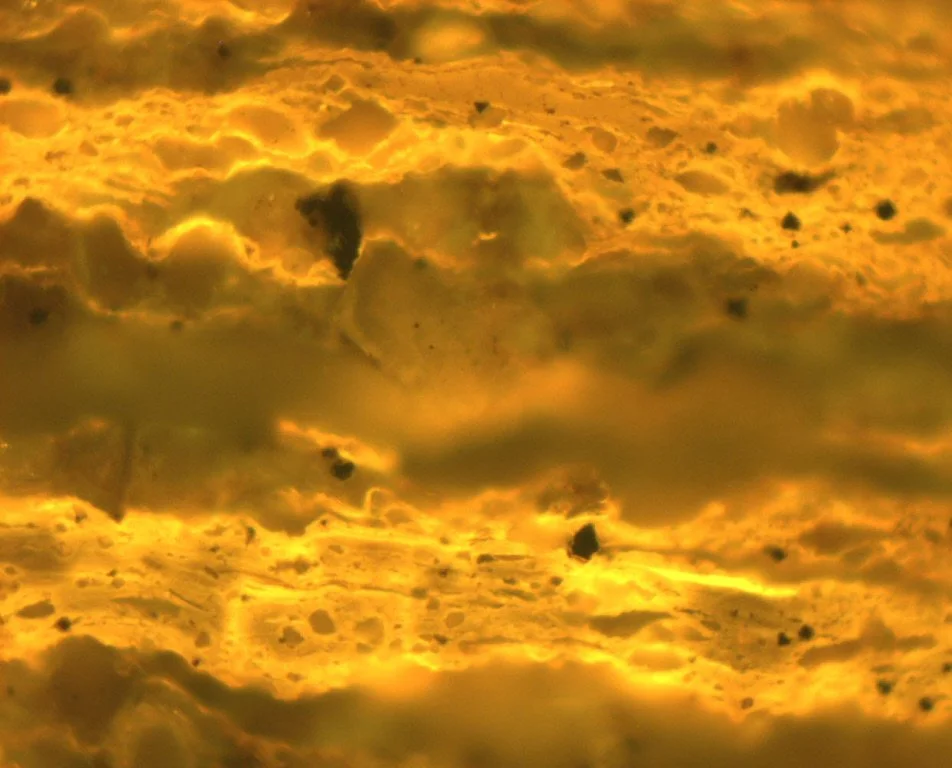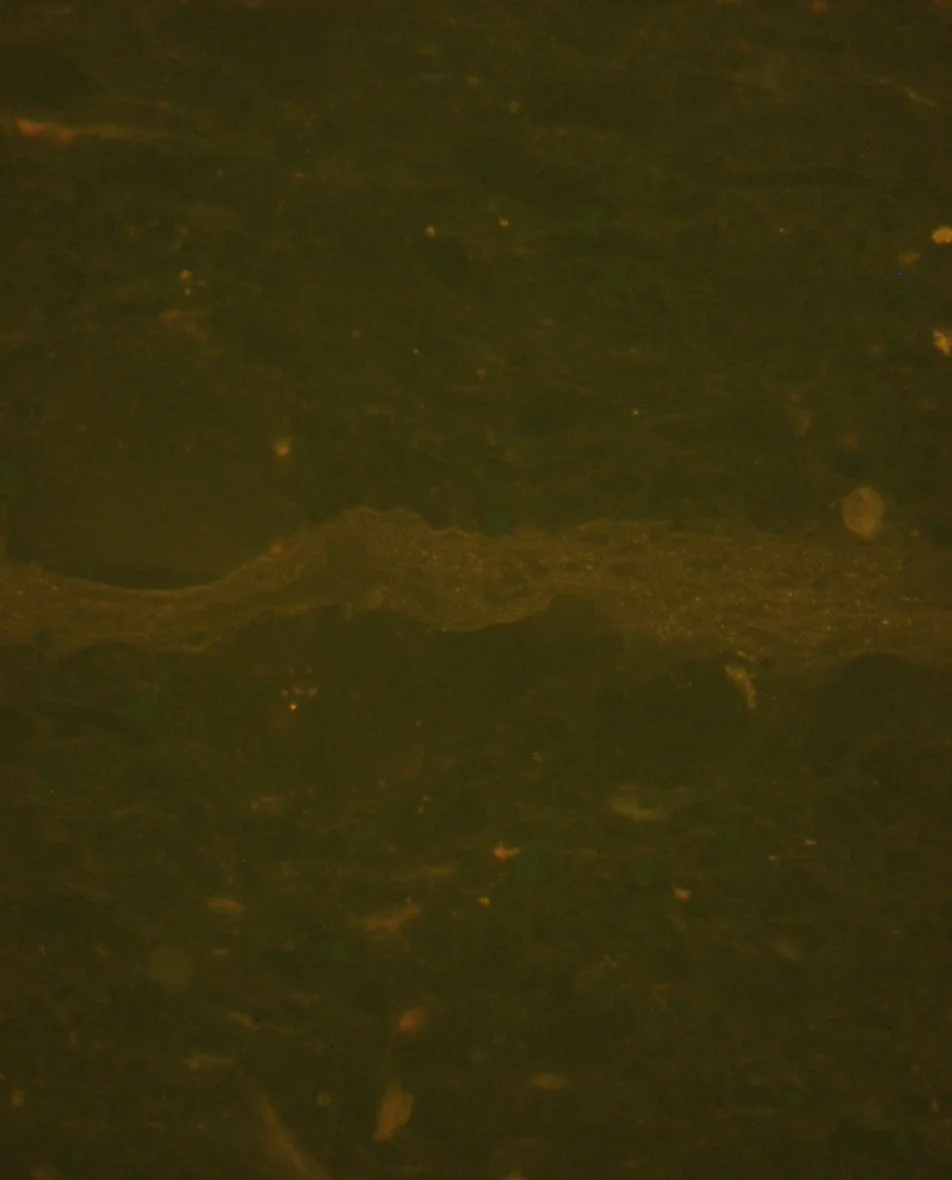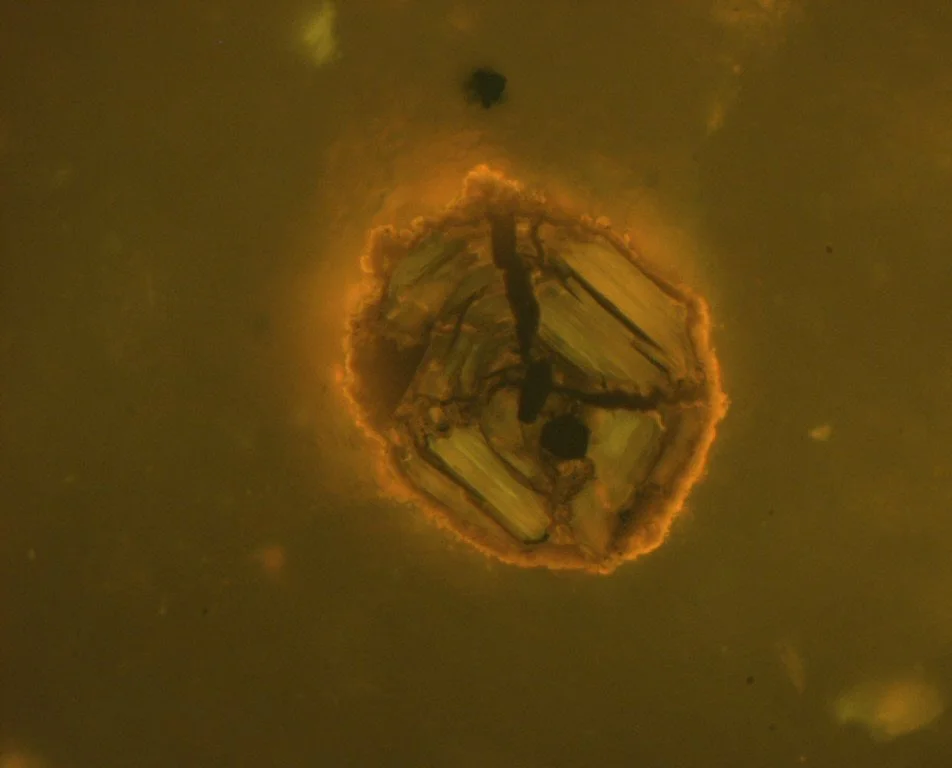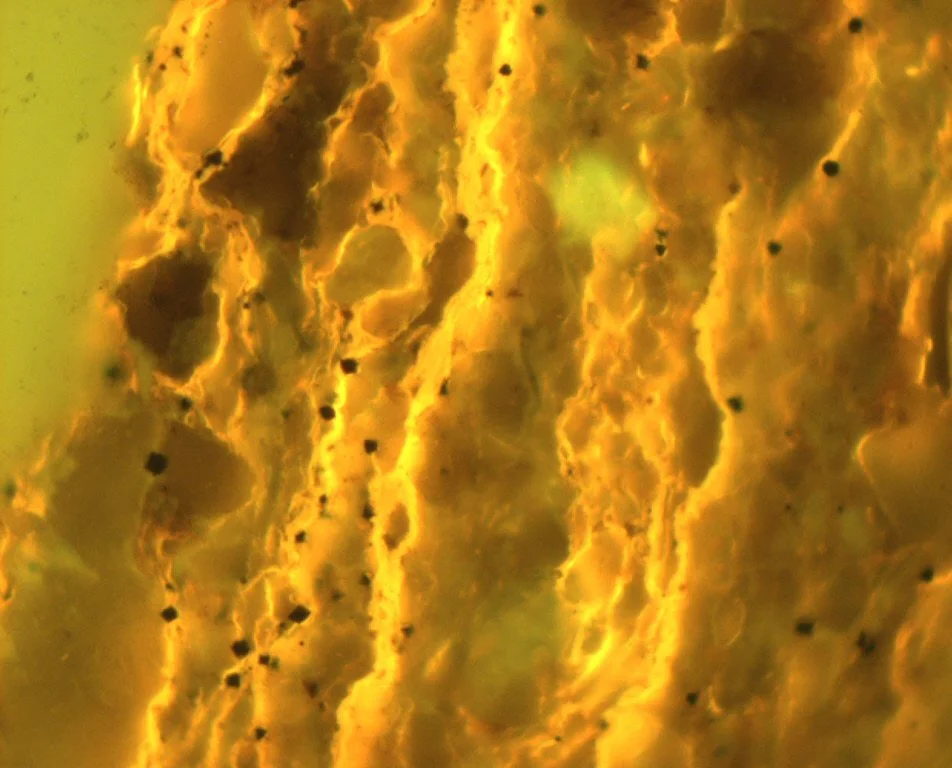
Projects
Coal Characterisation Projects
These projects focus on the detailed analysis of the organic and mineral components of coal, utilizing advanced techniques and refining methodologies to meet project-specific objectives.
Emplacement to Extinction: can crustal carbon release from magmatic heating cause extinction-level environmental change?
Funding: Marsden Fund UOA2319 (Wellington, NZ) - NZ$958,000
Timeline: January 2024 – Ongoing
Role:
Fieldwork and sampling of organic matter-rich rocks (coal, carbonaceous mudstones, shales) from Antarctica's Dry Valleys, Victoria Land.
Petrographic analysis of organic matter interpretation of the data regarding contact and regional metamorphism and igneous emplacement.
Evaluation of the volatile release from organic matter-rich sediments.
Integration of results with paleomagnetic data.
Objective:
Investigation of the potential of Large Igneous Provinces (LIPs) as triggers for mass extinctions through the release of massive amounts of CO2 and other gases.
Assessment of the extent of crustal heating and carbon release during Ferrar LIP magmatism through paleomagnetic and organic matter analysis of sedimentary rocks in the region.
The focus is on the 183 Ma Ferrar LIP in Antarctica, which closely correlates with the Toarcian extinction event.
Impact: The project aims to determine if LIP sill complexes can release sufficient crustal carbon to cause extinction-level environmental change, drawing parallels to current environmental crises.
Upper Wright Valley, Antarctica
Digital Petrographic Atlas of Australian Coals – Maintaining the knowledge
Funding: Australian Coal Association Research Program (ACARP C33065) - $197,537
Timeline: July 2021 – Ongoing
Role: Project Conception and co-lead. Sample preparation, coal analysis, and Atlas design and writing, integration of the geologic framework with coal analysis in the Bowen Basin.
Objectives: Development of a comprehensive Digital Petrographic Atlas of Australian Coals, covering maceral, microlithotype, and mineral composition at various ranks.
Impact: The Atlas will serve as a key reference and training tool for the coal industry, supporting technical marketing teams, service labs, and academics, while clarifying differences in coal standards and practices across producers and customers. This resource will assist in understanding basin-scale variation in coal properties and aid in creating models for predicting coal quality.
Doing maceral analyses on my computer.
Consultancy projects
(for coal and mineral characterization with Glencore and Minton Treharne & Davies)
Timeline: March 2023 to March 2024
Role: Managing consultancy contract agreements between the companies and UQ, meeting with clients, liaison with clients for clearance of data and samples, data and sample analyses. Provided expertise on coal-related issues.
Hyperspectral characterisation of coal and evaluation of coal quality spectral predictive features
Funding: Plotlogic Pty Ltd - $105,033
Timeline: April 2022 – December 2023
Role:
Project Conception, Lead and Management.
Coal scanning using SWIR (Plotlogic sensors) and MWIR (Agilent, Exploration Data Centre, Zillmere) wavelengths for organic matter characterisation, big data analytics, and report writing.
Objective: Evaluation of hyperspectral scanners for determining and predicting coal quality parameters.
Impact: Fast, non-destructive, cost-effective, and real-time evaluation of coal characteristics.
VNIR-SWIR spectral features of coal.
Utilising hyperspectral drill core scanning for geotechnical characterisation
Funding: Australian Coal Association Research Program (ACARP C34033) - $141,350
Timeline: April 2022 – June 2023
Role: Analysis and interpretation of hyperspectral data from coal seams and interburden sediments. Report writing, and review.
Objective: Enhancing data interpretation and analysis from hyperspectral imagery for characterizing overburden material in open-cut coal projects.
Impact: Integrating rapid, non-destructive mineralogical and textural data with geotechnical testing can offer new insights into rock mass behaviour over the life of a mine.
Vale - UQ Geoscience Program
Funding: Matching funds from Vale and The University of Queensland - $2,500,000
Timeline: 2010 – December 2023
Role:
Coal rank evolution, igneous intrusions (geochronology), and the utilization of thermally altered coal in Eastern Australia coal basins and Moatize Basin, Mozambique.
Mineral and elemental mapping (phosphorus) in Moatize.
Experimental analysis of minerals and elemental profile using ITRAX-XRF core scanning (University of New South Wales, NSW) on a coal seam and associated sediments.
Annual visits, fieldwork and project’s updates at the Moatize minesite, Mozambique.
Managing the coal sample preparation laboratory and microscope laboratory built under the program’s umbrella.
Supervision of students working within the program.
Training students and visiting researchers in coal petrography and petrology.
Objective: Focused on coal geosciences research, education, and training, particularly on environmental issues and industry challenges. The program spans various projects across Australian and Mozambique.
Impact: The program has educated numerous graduate students, many of whom are now employed by Australian mining companies. It also solves geological problems encountered in coal exploration both in Australia and overseas.
Fieldwork in Moatize, Mozambique.
Fluid source and emplacement mechanisms for phosphorus and fluorine-bearing minerals in Bowen Basin coals
Funding: Australian Coal Association Research Program (ACARP C26029) - $155,155
Timeline: 2017 – 2020
Role: Sample analysis, mineral characterization, interpretation and integration of big datasets supplied by coal mining companies, writing of reports and papers.
Objective: To enhance predictability of phosphorus and fluorine distribution within Bowen Basin coals, helping to refine mining strategies and improve coal utilization practices.
Impact: Improves understanding of the occurrence and distribution of deleterious elements in coal, which directly impacts coal beneficiation and environmental strategies.
Fluorapatite, chalcopyrite and kaolinite filling cell lumina of inertinite macerals. Bowen Basin, Australia. SEM image in BSE mode and respective EDS elemental analyses.
Mineralogical occurrence, seam distribution and modelling of fluorine in coal seams, Bowen Basin
Funding: BHPB - $67,540
Timeline: 2016
Role: Petrographic and mineralogical analysis of coal samples, focusing on phosphate identification and fluorine detection using optical electron microscopy.
Objective: Investigating the distribution and occurrence of phosphate minerals and their relationship to fluorine within coal seams in the Bowen Basin.
Impact: Contributes to a broader understanding of phosphate and fluorine mineralization in Australian coal seams, leading to improved coal quality models.
Characterisation and differentiation of the Rangal and Moranbah Coal Members in the Central Bowen Basin
Funding: Shell International Exploration and Production Inc. - $100,000
Timeline: 2013 – 2014
Role:
Coal core characterization using microscopic techniques and automated scanning electron microscopy (QEMSCAN).
Development of libraries for minerals in coal in collaboration with FEI (Brisbane) and Centro de Desenvolvimento Mineral (Belo Horizonte, Brazil).
Managing big datasets with coal quality data.
Objective: Systematic characterization of coal properties influencing gas drainage behaviour during natural gas extraction from Bowen Basin coal seams.
Impact: Enhanced understanding of how coal composition affects gas sorption and permeability, supporting gas resource extraction strategies.
QEMSCAN mineralogical mapping of minerals in coal sample. Bowen Basin, Australia.
Shale Gas and Oil Shale Projects
These projects focus on the evaluation of source and reservoir rocks for oil and gas exploration in the McArthur Basin, Northern Territory, and the Eromanga Basin, Queensland. As natural gas is increasingly viewed as a transition fuel to renewable energy, these studies are vital for exploring alternative resources to thermal coal.
Jundah Project
Funding: National Energy Resources Australia (NERA) and Bridgeport Energy - $545,000
Timeline: 2019 – 2022
Role:
Managing of the sample collection and methodologies applied to the study.
Assessment of thermal maturity using petrographic (organofacies, palynofacies, reflectance, fluorescence) and geochemical methods (rock-Eval). Biomarker analysis carried out at the Universide Federal do Rio de Janeiro (Brazil) and in collaboration with Curtin University (WA).
Liaison with partners for clearance of datasets and discussions on the project progression.
Objectives: Collaborative project between Bridgeport Energy, the Queensland Geological Survey, and UQ aimed to assess the hydrocarbon potential of the Toolebuc Formation, which spans a vast area across the Eromanga Basin, South Australia, and the Northern Territory. UQ's role was to evaluate the thermal maturity of the formation using unconventional methods, as conventional techniques failed to explain the observed maturation trends.
Impact: This research explores the potential of the Toolebuc Formation as a future energy resource for Australia, especially as the country transitions from coal to renewable energy, offering significant economic value.
SEM image of the organic-rich facies of the Toolebuc Formation, Eromanga Basin, Australia.
Oil drag seen under the optical microscope with blue light. Toolebuc Formation, Eromanga Basin, Australia.
Re-evaluation of the thermal maturity of the McArthur Basin source rocks
Funding: Armour Energy and Commonwealth, Department of Industry, Science, Energy and Resources (Innovation Connection Grant) - $109,926
Timeline: 2016 – 2017
Role:
Selection and collection of core samples at the NTGS core shed, Darwin.
Petrography analysis of the organic material in Proterozoic-age source rocks to assess thermal maturation.
Adaptation of the classic van Krevelen diagram to account for the unique maturation kinetics of Proterozoic organic material.
Integration of the results in a broad geological context of the McArthur Basin and mineralisation.
Liaison with partners for clearance of datasets discussions on the project progression.
Objectives: Building on previous studies, this project re-evaluated the maturity of source rocks across a larger area of the McArthur Basin in the Northern Territory. It focused on understanding the thermal maturity of various formations in the Tawallah and McArthur groups considered potential hydrocarbon sources in the southern part of the basin.
Impact: This research explores the McArthur Basin's potential as a natural gas resource for Australia, focusing on hydrocarbon generation and migration.
Lamalginite in the Barney Creek Formation, McArthur Group, McArthur Basin, Australia
Bituminite in the Wollogorang Formation, Tawallah Group, McArthur Basin, Australia.
Shale Gas – McArthur Basin - LP3 well
Funding: UQ Internal and Armour Energy
Timeline: 2014
Role: Characterization and assessment of the organic matter found in the source and reservoir rocks intercepted by the LP3 well.
Objectives: Evaluate the thermal maturity of the LP3 well drilled by Armour Energy in the McArthur Basin using optical microscopy and Rock-Eval data.
Impact: The study provided insights into potential sources for natural gas resources in the Northern Territory, assessing the source rock potential of the Barney Creek Formation and associated reservoir formations.
Solid bitimen filling fractures possible associated with liquid hydrocarbons. Barney Creek Formation, McArthur Basin, Australia.
Thucholite. Lynott Formation, McArthur Basin, Australia.
Shale gas potential - McArthur Basin - Glyde 1 well and Glyde ST1 horizontal well
Funding: Armour Energy
Timeline: 2013
Role: Evaluation of the maturation of the Barney Creek Formation intercepted by the Glyde 1 and Glyde ST1 wells using optical microscopy and illite crystallinity.
Objectives: Evaluation of the thermal maturity of the Glyde 1 and Glyde ST1 wells drilled by Armour Energy.
Impact: The project investigates the potential of the McArthur Basin as a source for natural gas.
Lamalginite. Barney Creek Formation, McArthur Basin, Australia.
Carbon Sequestration Project
This project investigates the use of geological formations for CO₂ storage, contributing to efforts to reduce carbon emissions.
Hyperspectral scanning of Precipice Outcrop
Funding: Australian National Low Emissions Coal Research and Development (ANLEC) - $475,000
Timeline: 2015 – 2016
Role:
Fieldwork at Carnarvon Gorge Highway outcrop and coring of small samples sandstone and siltstones for mineralogical studies.
Comprehensive analysis of the mineralogy of both fresh rock and weathered outcrop surfaces, using HyLogger3TM (VNIR, SWIR, TIR regions, at Exploration Data Centre, Zillmere), SpecimTM (VNIR, SWIR regions, at Sydney University), SEM and optical microscopy.
Development of weathering profiles.
Integration of the core analysis with the outcrop hyperspectral mapping. Report writing.
Objectives: The aim of this project was to test the application of hyperspectral mapping of the Precipice Sandstone outcrop in the Surat Basin, Queensland, to develop a model of the spatial variability in mineralogy.
Impact: This project provided valuable insights into the mineralogy and weathering of the Precipice Sandstone Formation, contributing to its potential use as a CO₂ storage site. Understanding the formation’s characteristics at the outcrop scale is vital for evaluating its suitability for CO₂ sequestration.
HySpex scan of small drill cores. Precipice Sandstone, Surat Basin, Australia.
Clay minerals. Precipice Sandstone, Surat Basin, Australia. SEM image in BSE mode.
Development of New Technologies
These projects focus on the development of innovative technologies for the automated characterization of coal, advancing efficiency and accuracy in the coal industry.
Coal Spectral libraries for scanning devices
Funding: $103,540, Australian Coal Association Research Program (ACARP C28045)
Timeline: 2019 – April 2021
Role:
Project Conception, lead and management.
Scanning with partner using scanner devices in the SWIR (Hyperspectral Core Imager, at Corescan), MWIR (Agilent, at CSIRO, WA) and LWIR (HyLogger3, at Corescan) regions.
Coal characterisation analyses including chemical and petrographic analyses and micro-FTIR.
Interpretation of the spectral results for the coal organic matter.
Creation of the coal spectral library and writing.
Objectives: Development spectral libraries for coal, which had previously not existed. These libraries serve a similar purpose as those used for minerals, enabling better automated coal characterization using spectral scanners. This was a collaborative project with Corescan, a company based in Perth (WA).
Impact: Spectral scanners have become increasingly prevalent for geological material characterization, providing rapid, systematic, and operator-independent analysis. However, for effective use with coal, a coal-specific spectral library was essential. This project developed such a library, which is now used by researchers and companies with spectral scanning systems.
Absorption bands from coals with different ranks. VNIR-SWIR region - HCI Corescan; MWIR - Agilent; LWIR - HyLogger 3.
Deep neural networks for maceral analysis
Role:
Supervising a PhD visiting student from PUC, Brazil.
Development of maceral databases for the neural network by identification of individual macerals on hundreds of photomiacrographs of coals at various ranks.
Interpretation of the results to refine the network’s understanding and classification accuracy.
Objectives: This project focused on developing a neural network to automatically classify coal macerals—microscopic constituents of coal—without the need for an optical microscope or operator involvement. Collaboration with PUC (Brazil)
Impact: The application of machine learning enables quick, objective maceral analysis, eliminating the subjectivity inherent in traditional optical methods.
Annotation and classification of macerals for the neural network database.
Smarter and cost effective acquisition of coal quality by semi-automatic analysis of Corescan® images
Funding: Australian Coal Association Research Program (ACARP C25028) - $205,600,
Timeline: 2015 – 2017
Role: Characterisation of coal and stone partings in core samples using scanning technologies such as HyLogger3 (Exploration Data Centre, Zillmere), Corescan HCI (Corescan, WA), Itrax-XRF (University of New South Wales, NSW), and X-CT medical scan (Brisbane).
Objectives: Prediction of coal processing attributes by analysing high-resolution drill core images obtained through hyperspectral scanning technologies like Corescan and HyLogger3. It focused on characterizing coal based on textural and mineralogical properties.
Impact: The semi-automatic acquisition of coal properties allows for the optimization of mining processes such as beneficiation and blending, improving overall efficiency and coal quality.
Corescan HCI mapping of coal core.
Teaching
The following project focuses on enhancing teaching tools and resources for coal petrology students.
Bring Organic Petrology to the XXI century
Funding: Faculty of Science Teaching and Learning Grants Scheme, UQ - $23,500
Year: 2016
Role:
Managing the project.
Selecting samples and preparing the digital images for the coal petrology classes.
Instruct students how to perform petrographic analyses on their computers using Fossil Student.
Objectives: Development of a digital database of coal, dispersed organic matter, and coal by-products, to be used by students during lectures, practical sessions, and exams.
Impact: The digital database allowed students to use a small application (Fossil Student application) on their computers instead of relying on expensive optical microscopes for coal analysis. By scanning polished coal blocks and creating a database, students could access and experiment with coal petrology analysis during classes, without the need for specialized equipment.
